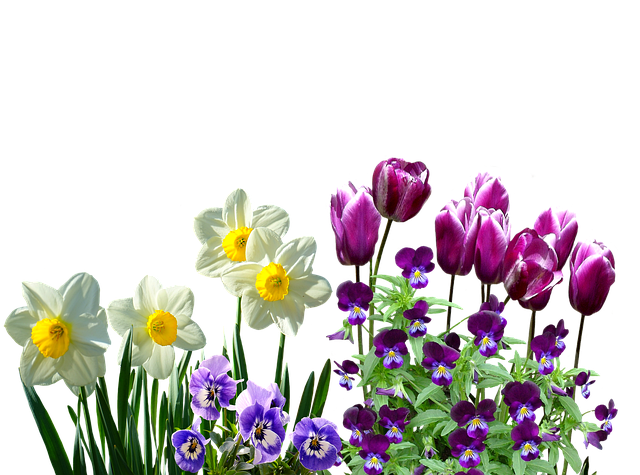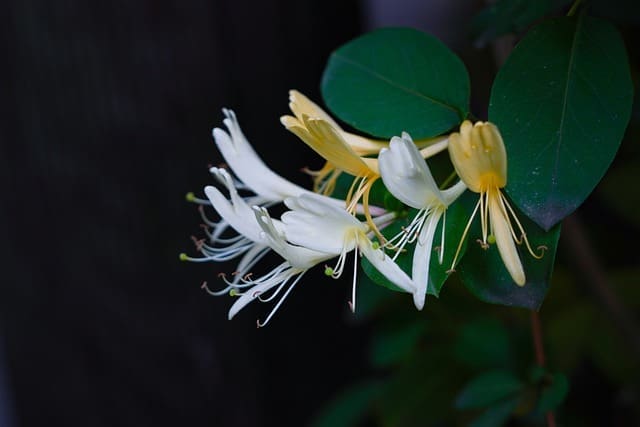Spring is the time of year when we rejoice in the return of fresh flowers, and with it comes many opportunities for a beautiful and bountiful garden. Here are six tips for a better spring flower garden.
Choose Early Bloomers

One of the best ways to get your flowers blooming earlier is by choosing plants that start blooming early. These plants can include daffodils, tulips, iris, and ranunculus. By planting these types of flowers early in the season, you will be able to enjoy their beautiful displays much sooner than if you planted them later on in the season.
Another tip for getting your flowers flowering earlier is to keep your garden soil moist. Moisture helps encourage root growth, which leads to Flowers coming up sooner. Another way to keep your garden soil moist is to water it regularly using an irrigation system or rain barrel.
Finally, ensure you fertilize your plants regularly with a low-nitrogen fertilizer. This will help increase the growth of the plant’s root system and help them bloom sooner. This is according to Christine Lawson, owner of One Deity.
Pair Bulbs and Hardy Annuals
When planning your spring flower garden, consider pairing bulbs and hardy annuals. Bulbs typically last longer than annuals and add instant color to your garden, while hardy annuals can be planted later in the season and will return year after year without replanting.
Here are some tips for pairing bulbs and hardy annuals:
- Choose compatible bulbs. For example, tuberous begonias (Begonia tuberosa) and bearded irises (Iris pseudacorus) are both bulbous plants that like cool weather, whereas lilies (Lilium longiflorum) prefer warmer temperatures. Match the plant type with the bulb type to ensure a successful garden outcome.
- Think about height when pairing bulbs and annuals. Taller flowers will look better above shorter plants, such as daffodils (Narcissus daffodil ioides) paired with hostas (Hosta x hybrida ‘Snowball’). Likewise, short Annual flowers like candytufts (Iberis sempervirens) will look best with taller perennials like Oriental poppies (Papaver orientale).
- Consider planting multiple types of bulbs together. For example, mix tulips (Tulipa Lutea), crocuses (Crocus sativus), snowdrops (Galanthus nivalis), or hyacinths (Hyacinthus orientalis).
This is thanks to Benjamin Stenson, CEO & Founder of Norsemen Home Remodeling.
Include Flowering Shrubs


When it comes to flowers in the spring, flowering shrubs can be a great option. Not only do they add color and beauty to your garden, but they also produce many attractive blooms over a longer period of time than some other types of plants.
Here are flowering shrubs that are worth considering for your garden this spring:
1. Japanese Honeysuckle (Lonicera japonica)
This old-fashioned shrub produces clusters of pink or white flowers in early April. It’s adaptable, thriving in most soils and conditions, and resistant to many pests and diseases.
2. Redbud (Cyrillus florida)
This tree-like shrub is common throughout the eastern United States and produces clusters of magenta or pink flowers from late March through May. It tolerates poor soil conditions and can be invasive if not controlled, but its hardy nature makes it a good choice for areas prone to cold weather damage.
3. Dogwood (Cornus sanguinea)
This popular tree produces showy red blooms in early to mid-April. It prefers full sun but will also tolerate partial shade, making it a good choice for gardens with limited space or those that experience afternoon temperatures below 60 degrees Fahrenheit.
4. Holly (Ilex aquifolium)
This fast-growing tree is hardy to Zone 4 and produces clusters of white or pale green flowers from early March.
Thanks to Ashley Fett, owner of Winter Hare.
Grow Spring Containers
If you’re looking to get into gardening in the springtime, there are a few things you’ll need to do. First of all, you’ll need to start with some containers. Many different types of containers are available these days, so it’s important to find one that is right for your needs.
Some people prefer pre-made pots and planters, while others prefer to create their own gardens from scratch. Whichever route you choose, it’s important to follow some basic tips. For example, ensure the soil is well-drained and acidic neutral (pH levels between 6 and 7). This will help encourage healthy growth in your plants.
Another important thing to remember is to water your plants regularly. Not watering them can cause them to rot, so it’s important to keep an eye on the moisture level in your container and adjust as needed. And finally, be sure not to over-fertilize your plants – too much fertilizer can actually harm them. This is according to Smithe Sodine, Founder of Smithy Home Couture.
Plant a Crocus Lawn
If you want to add some zing to your home’s garden this spring, planting a crocus lawn is the perfect solution. Crocus is one of the most popular spring flowers, and they make a beautiful addition to any garden. Here are five tips for success with crocus:
- Start by selecting the right type of crocus. Several crocuses are available, so make sure you choose the one that best fits your garden and personality. Some common types include the Russian crocus, noted for its bright yellow flowers, and the snowdrop crocus, known for its delicate pink flowers.
- Choose a location for your lawn. The best locations for crocus lawns are in areas that receive partial sunlight or full sun throughout the day.
- Prepare the soil before planting your crocus seeds. Crocus requires well-drained soil to thrive, so add organic matter before planting your seeds.
- Plant your seeds one inch deep and four inches apart from each other.
- Water your plants regularly during the early stages of growth; don’t forget to water them again when the ground begins to dry out after rainfall! Once you see blooms forming, give your lawn another good watering as needed – but don’t overwater! Crocus are easy plants to care for – just be sure to give them plenty of light and water, and you’ll have beautiful flowers on your porch.
Plant Bare Root Perennials
Consider planting bare-root perennials if you want to add color and life to your garden in the early spring. Bare root plants are rooted in water but not in the soil, meaning they can be planted directly into the ground or containers. They require little care once they’re in the garden and tend to be more resistant to pests and disease.
Some of the best bare root perennials for the early spring season include verbena, lily of the valley, tulip poplar, Russian sage, forget-me-nots, daffodils, hyacinths, and chrysanthemums. Check out our list of containerized bare-root plants for a more varied selection. Many of these plants will also do well in a sunny spot in the garden or if planted near a water feature. This is according to Haiping Chen, owner of Wood Nit.
Featured Image by Jill Wellington from Pixabay




